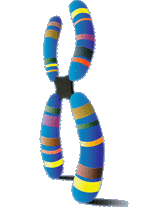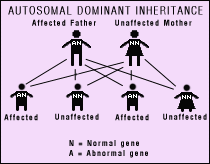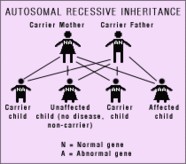















Jump to:
Sporadic ALS | Familial ALS | Guamanian ALS
ALS can be classified into three different forms--sporadic, familial, or Guamanian. All three forms hold motor neuron death and its effects on the body in common, yet despite these similarities, it does not come as a surprise when differences are put into the picture as well. The root of the differences is in the causes of the disease, and this leads to a varied age of onset and prognosis.
Sporadic ALS is the most common form of the disease, accounting for 90% of all cases. It is also known as Classic ALS, and occurs randomly without a known cause. Sporadic ALS makes no distinction in race, ethnicity, wealth, or gender, although the ratio for men is slightly higher than women--estimates are anywhere from 1.2:1 to 1.5:1. The average age of onset is approximately 55 years of age, but sometimes those in their thirties or seventies may get the disease, being more common among older people than those who are young. Generally, younger ALS patients have a longer time of survival than older ALS patients, but many factors need to be taken into account, such as overall health and the types of treatment received.
 About 10% of all ALS cases have been traced back to a family member who had the disease. Familial ALS, also known as FALS for short, is inherited from one's parents and can be passed along to one's children. Mutations in various genes can be passed along in an autosomal-dominant, autosomal-recessive, or X-linked manner. An autosomal-dominant trait means that only one allele, or version, of a gene is needed for a person to get the characteristic. For example, say that a form of FALS requires for it to be inherited autosomal-dominantly. The dominant trait [FALS] is represented by the A allele, which is dominant, and if a person receives a copy of the A allele, they will get that form of FALS. One or both of two alleles transferred to the child must be an A in order to get autosomal-dominant FALS (genotype AA or Aa). Another type of inheritance is autosomal-recessive inheritance. When something is autosomal-recessive, both recessive alleles (aa) are needed for that trait to be expressed. Having only one recessive allele with a dominant allele (Aa) does not make a person affected. Instead, they are called carriers, people who have the disease but show no signs or symptoms of it, and can pass the trait along to their children if they mate with an affected or carrier person. By having children with a person who is also a carrier, there is a 1 in 4 chance their offspring might be affected, while it is 1 in 2 if they mate with one who is affected. Lastly, X-linked inheritance passes along on the X chromosome. Fathers never transfer their X-linked traits to their sons, for it is the mothers who have the ability to pass X-linked traits to both sons and daughters. Autosomal-recessive and some X-linked types of FALS can skip generations, whereas for autosomal-dominant types it is not possible, for if a child does not receive the dominant allele from their parents, the disease would not be passed down to their future offspring. For more information on the molecular biology of FALS, see causes.
About 10% of all ALS cases have been traced back to a family member who had the disease. Familial ALS, also known as FALS for short, is inherited from one's parents and can be passed along to one's children. Mutations in various genes can be passed along in an autosomal-dominant, autosomal-recessive, or X-linked manner. An autosomal-dominant trait means that only one allele, or version, of a gene is needed for a person to get the characteristic. For example, say that a form of FALS requires for it to be inherited autosomal-dominantly. The dominant trait [FALS] is represented by the A allele, which is dominant, and if a person receives a copy of the A allele, they will get that form of FALS. One or both of two alleles transferred to the child must be an A in order to get autosomal-dominant FALS (genotype AA or Aa). Another type of inheritance is autosomal-recessive inheritance. When something is autosomal-recessive, both recessive alleles (aa) are needed for that trait to be expressed. Having only one recessive allele with a dominant allele (Aa) does not make a person affected. Instead, they are called carriers, people who have the disease but show no signs or symptoms of it, and can pass the trait along to their children if they mate with an affected or carrier person. By having children with a person who is also a carrier, there is a 1 in 4 chance their offspring might be affected, while it is 1 in 2 if they mate with one who is affected. Lastly, X-linked inheritance passes along on the X chromosome. Fathers never transfer their X-linked traits to their sons, for it is the mothers who have the ability to pass X-linked traits to both sons and daughters. Autosomal-recessive and some X-linked types of FALS can skip generations, whereas for autosomal-dominant types it is not possible, for if a child does not receive the dominant allele from their parents, the disease would not be passed down to their future offspring. For more information on the molecular biology of FALS, see causes.


In the 1950s, an epidemic of ALS occurred among the Chamorro people on the island nation of Guam, located in the Pacific Ocean northeast of Australia. During that decade, there were about 50-100 times more cases of ALS reported there than anywhere else in the world. They exhibited the usual symptoms of ALS, but tended to live on average 12� years, and the number of men afflicted were triple that of women. Perhaps unique to Guamanian ALS is the dementia and Parkinson's accompanied in some cases. In sporadic ALS, a person's mind is intact, so it is a mystery as to why people in Guam develop the dementia.
Guamanian ALS does not restrict itself to Guam alone. Places like the Mariana Islands, western New Guinea, and the Kii Peninsula on the Japanese island of Honshu have had high incidences of the disease, and is classified as Guamanian ALS. Scientists are not sure what caused the epidemic on Guam, but like in many aspects of ALS, they do have their theories.